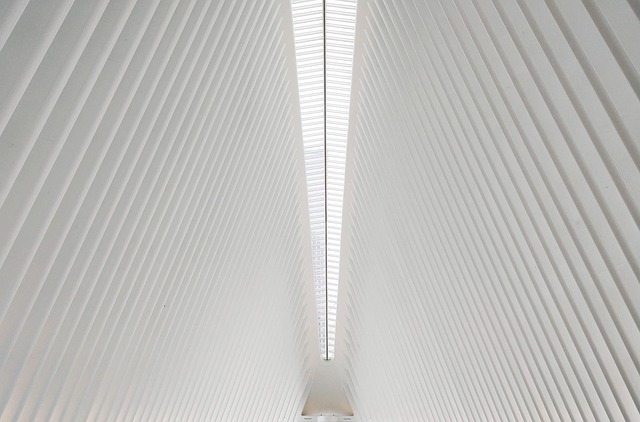Advanced roofing systems cater to diverse needs across residential, commercial, and industrial sectors, balancing durability, aesthetics, and energy efficiency. Tailored to specific structural requirements and environmental conditions, these systems evolved from basic thatch to modern solutions like high-performance shingles, metal panels, and energy-efficient membranes. Crafted with lightweight composites and reflective coatings, they enhance structural integrity, improve insulation, and reduce maintenance costs while promoting environmentally sustainable construction. Selection is guided by climate, budget, and long-term sustainability goals, ensuring optimal performance and increased property value.
In today’s diverse built environment, choosing the right roofing system is paramount for any structure—from cozy homes to towering skyscrapers and industrial complexes. This article explores the concept of compatible roofing solutions tailored to meet the unique needs of residential, commercial, and industrial applications. We delve into the historical evolution of roofing systems, highlight key characteristics of advanced roofing technologies, and discuss the manifold benefits of integrating versatile designs across sectors. Additionally, it guides readers in selecting the optimal roofing technology for their specific properties.
Understanding Roof Types: Residential, Commercial, and Industrial
Roofing systems play a critical role in protecting buildings from the elements, and their design varies significantly across residential, commercial, and industrial structures. Understanding these differences is essential when choosing an advanced roofing system that can withstand specific structural stresses and environmental challenges.
Residential roofs are typically designed for aesthetic appeal and weather protection for private homes. Commercial roofs, on the other hand, support larger structures like offices and retail spaces, often requiring systems that can handle increased foot traffic and varied weather conditions. Industrial roofs protect vast warehouses, factories, and manufacturing facilities from harsh environments, including heavy rain, snow, and extreme temperatures, necessitating robust, durable roofing solutions.
The Evolution of Roofing Systems: A Historical Perspective
The evolution of roofing systems reflects humanity’s continuous quest for better protection from the elements, showcasing a remarkable journey from basic shelter to advanced roofing solutions. Historically, roofs served primarily as a means to keep out rain and snow, with thatch, wood shakes, and tile being common materials in ancient times. As civilizations progressed, so did roofing techniques; the introduction of metal roofing in the 19th century revolutionized construction, offering increased durability and longevity.
This progression has been accelerated by modern innovations, leading to a diverse range of advanced roofing systems compatible with residential, commercial, and industrial applications. Today’s roofs are not just structural components but also essential design elements, featuring materials like high-performance shingles, metal panels, and energy-efficient membranes. These developments cater to various needs, from aesthetic appeal and reduced energy costs to enhanced safety and storm resistance, showcasing the far reach of human ingenuity in tackling the challenges of climate and construction.
Key Characteristics of Advanced Roofing Solutions
Advanced roofing solutions are designed to cater to a wide range of needs, making them compatible with residential, commercial, and industrial roof types. These innovative systems offer more than just aesthetic appeal; they prioritize durability, energy efficiency, and low maintenance. Key characteristics include high-quality materials, advanced installation techniques, and smart technology integration. By utilizing cutting-edge materials like lightweight yet robust composites and reflective coatings, advanced roofing systems enhance structural integrity while reducing weight, thereby ensuring longevity even in harsh weather conditions.
Moreover, these solutions are tailored to optimize energy efficiency, incorporating insulation properties that regulate indoor temperatures. Smart technology adds another layer of functionality, with sensors capable of monitoring performance, detecting leaks early, and providing real-time data for proactive maintenance. This holistic approach ensures that advanced roofing systems not only meet but exceed expectations, offering superior protection and value for residential, commercial, and industrial applications alike.
Benefits of Compatible Roofing Systems Across Sectors
In today’s diverse built environment, one size does not fit all when it comes to roofing. That’s where the benefits of compatible roofing systems truly shine. By designing advanced roofing systems that cater to residential, commercial, and industrial needs, we see several advantages across sectors.
Firstly, a unified approach ensures better integration and functionality. These systems can be tailored to specific requirements, offering enhanced structural support, improved insulation properties, and longer-lasting durability—all essential factors for each sector. This versatility not only streamlines the installation process but also translates into cost savings and reduced maintenance over time. Moreover, compatible roofing solutions contribute to energy efficiency, environmental sustainability, and visual aesthetics, creating harmonious structures that cater to various purposes while meeting modern standards.
Choosing the Right Roofing Technology for Your Property
Choosing the right roofing technology for your property is a critical step in ensuring its durability, aesthetics, and energy efficiency. In today’s market, advanced roofing systems offer an array of options suitable for residential, commercial, and industrial applications. These innovative solutions range from traditional materials like asphalt shingles to cutting-edge technologies such as metal panels and cool roofs, each with unique advantages tailored to specific needs.
When selecting a roofing technology, consider factors like climate, budget, maintenance requirements, and long-term sustainability goals. For instance, regions with frequent storms or heavy snowfall may benefit from impact-resistant metal roofs or snow retention systems. Commercial buildings often require low-maintenance solutions like flat roof membranes that can withstand high foot traffic. In contrast, industrial facilities might opt for specialized systems designed to handle extreme temperatures or corrosive environments. Advanced roofing systems not only enhance the structural integrity of a property but also contribute to its overall value and environmental sustainability.
In conclusion, the adoption of compatible, advanced roofing systems that cater to residential, commercial, and industrial needs is a significant step towards modern, efficient, and sustainable building practices. By understanding the diverse roof types and the historical evolution of roofing systems, property owners and professionals can make informed decisions when choosing the right technology. These innovative solutions offer numerous benefits, ensuring durability, energy efficiency, and enhanced aesthetics across sectors. Embracing advanced roofing systems is not just a trend but a necessary move towards a future-proof and environmentally conscious built environment.
